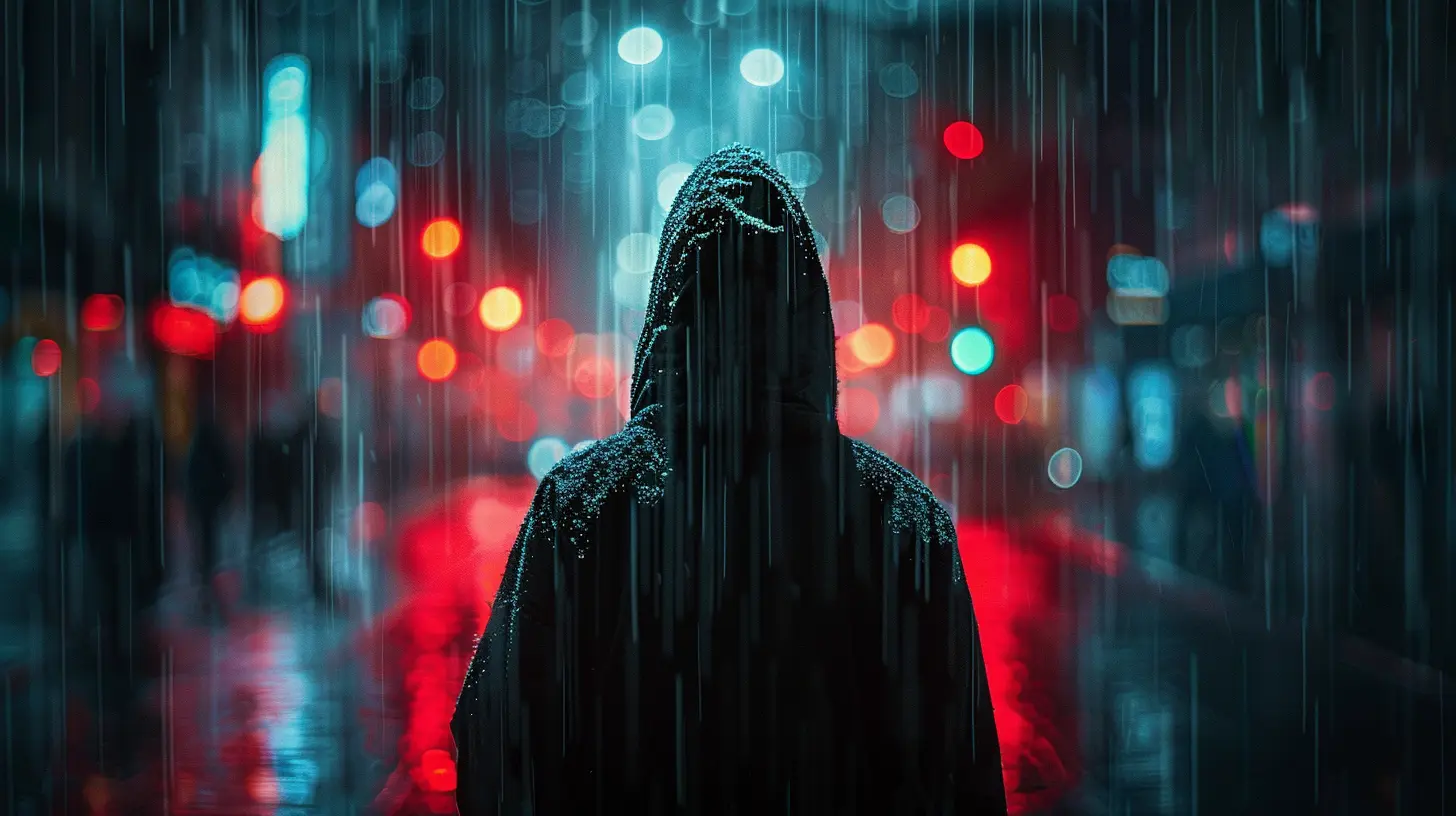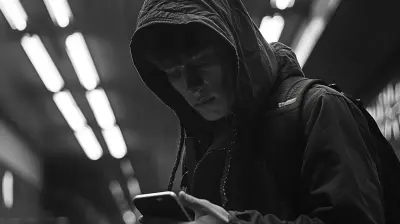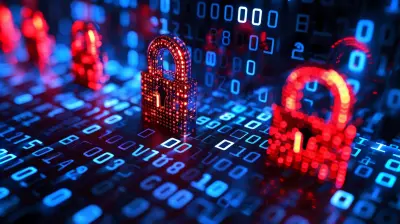The Hidden Risks of Public Wi-Fi Networks
15 July 2025
Ah, public Wi-Fi—the modern-day traveler’s best friend. Whether you're sipping on your favorite caramel macchiato at a local café or killing time at the airport lounge, there's a good chance you've connected to a free Wi-Fi network without a second thought. Heck, we’ve all done it.
But here’s the deal: while those open networks might be convenient, they’re also loaded with risks that most people either don’t know about or completely ignore. It’s like leaving your front door wide open and hoping nothing bad happens.
So, if you’ve ever asked yourself, “Is public Wi-Fi safe?”—you're in the right place. Let’s break it down, shall we?
Why Public Wi-Fi Is So Tempting (And So Dangerous)
There’s something almost magical about seeing that "Free Wi-Fi" sign pop up on your device. It feels like finding a hidden gem—immediate internet access without using up your data plan. But here’s where things start to get messy.Public Wi-Fi networks, especially those without passwords, are often unencrypted. That means the data you send and receive can be seen by anyone with the right tools. Yikes!
Imagine writing your deepest secrets on a postcard and handing it to a stranger for delivery. That's pretty much what you're doing when you access sensitive information over public Wi-Fi.
Common Dangers Lurking on Public Networks
Let’s talk turkey. Here are a few of the biggest threats you face when connecting to public Wi-Fi:1. Man-in-the-Middle Attacks (MITM)
This one's a classic. A Man-in-the-Middle attack is exactly what it sounds like—someone secretly intercepts the communication between you and the website you’re visiting. So that email you're reading or the password you're entering? Yeah, someone else might be peeking over your digital shoulder.2. Evil Twin Networks
Sounds like something from a sci-fi movie, right? An evil twin is a rogue hotspot designed to mimic a legitimate one. Let’s say you’re at "JavaBean Café" and connect to “JavaBeanFreeWiFi.” Boom—you’re on the hacker’s trap, not the real network. And just like that, they’ve got access to everything you do online.3. Packet Sniffing
Picture someone eavesdropping on your conversations by tapping into the airwaves. Packet sniffers are software tools that hackers use to capture and analyze the data sent over a network. If your data isn’t encrypted, it’s fair game.4. Malware Injection
Some attackers don’t just watch—they act. Public Wi-Fi can be used to push malware onto your device. Click the wrong ad or visit a manipulated site, and boom—your smartphone or laptop gets infected.5. Session Hijacking
This one’s sneaky. Once you're logged into a website (your bank, for instance), a hacker can hijack your session and take control—without needing your password. It’s like walking away from your Netflix account and someone binge-watching on your profile.
Real-Life Scenarios: It Can Happen to Anyone
You don’t need to be a high-profile target for hackers to want your data. Truth is, most attacks on public Wi-Fi are crimes of opportunity. Here are a few everyday scenarios:- You log into your bank account at the airport.
A hacker nearby intercepts your credentials using a MITM attack.
- You're shopping online in a coffee shop.
A keylogger, hidden in malicious code, records your credit card info.
- You check your email at a hotel.
A hacker poses as the network provider and directs you to a fake login page.
Still think public Wi-Fi is harmless?
How to Stay Safe on Public Wi-Fi (Without Becoming a Paranoid Hermit)
The good news? You don’t need to stop using public Wi-Fi altogether. You just need to be smart about it. Here are some simple, actionable tips to protect yourself:1. Use a VPN (Virtual Private Network)
If you only take one thing from this article, let it be this: use a VPN. A VPN encrypts your traffic, making it nearly impossible for hackers to snoop on your data.Think of it like sending a message in a locked briefcase, instead of an open envelope.
2. Stick to HTTPS Websites
Look for the little padlock icon in your browser’s address bar. HTTPS encrypts the data between your browser and the website. It’s not perfect, but it’s way better than plain old HTTP.3. Avoid Accessing Sensitive Info
Don’t log into your bank account or check confidential emails while on public Wi-Fi. If it can wait, let it wait.4. Forget the Network After Use
Once you’re done using that free Wi-Fi, make your device forget the network. You don’t want it to auto-connect the next time you're nearby—a hacker could set up a fake version of that network.5. Turn Off Sharing Features
File sharing, printer sharing, remote login—turn those off when you're on a public network. You don't want to leave your digital doors open.6. Keep Your Software Up to Date
Security patches exist for a reason. Make sure your operating system, browser, and antivirus software are all up to date. It’s your first line of defense.7. Use Two-Factor Authentication (2FA)
Even if someone does get your password, two-factor authentication adds an extra layer of security. It’s like having a security guard ask for your ID after you unlock the door.Tools That Can Help You Browse Safely
A few tools can make your digital life a whole lot safer. Here’s what you should keep in your security toolbox:- VPN Services: NordVPN, ExpressVPN, ProtonVPN
- Antivirus Software: Bitdefender, Norton, Malwarebytes
- Password Managers: LastPass, 1Password, Dashlane
- Secure Browsers: Firefox with HTTPS Everywhere, Brave, Tor (if you’re feeling extra cautious)
The Psychology Behind Careless Clicking
Let’s get real for a second. Most of us know we shouldn’t click on shady links or trust random pop-ups, but we do it anyway. Why?- Convenience: We want things fast and easy.
- FOMO: Fear of missing out on that last-minute deal or promo.
- Trust in the familiar: “This is Starbucks Wi-Fi, it has to be legit.”
Hackers bank on that human behavior. They don’t need to outsmart systems; they just need to outsmart people.
What To Do If You Think You’ve Been Hacked
So you slipped up. Maybe you didn’t use a VPN, or maybe you clicked something you shouldn’t have. It happens.Here’s what to do next:
1. Disconnect from the network immediately.
2. Change your passwords—start with the most sensitive accounts.
3. Scan your devices with antivirus software.
4. Monitor your accounts for unusual activity.
5. Contact your bank if you suspect any financial info was compromised.
The sooner you act, the better your chances of minimizing damage.
A Final Word: Awareness is Your Superpower
Here’s the bottom line: public Wi-Fi is not your enemy—it’s your frenemy. It’ll offer you free internet with one hand and steal your secrets with the other if you're not careful.So, the next time you’re about to connect, pause for a second. Ask yourself, “What am I doing online? Am I okay with someone seeing this?”
By being a little more cautious and using the right tools, you can enjoy the perks of public Wi-Fi without falling into its traps.
Stay safe out there, folks.
all images in this post were generated using AI tools
Category:
Cyber ThreatsAuthor:

John Peterson
Discussion
rate this article
2 comments
Ariana Ramos
Great insights on the vulnerabilities of public Wi-Fi! It's crucial for users to be aware of these risks and take precautions.
November 20, 2025 at 5:41 AM

John Peterson
Thank you! Awareness and precautions are key to staying safe on public Wi-Fi.
Easton Thornton
Public Wi-Fi is a digital minefield—connect at your own risk or not at all!
July 17, 2025 at 11:35 AM

John Peterson
Absolutely, staying cautious with public Wi-Fi is crucial; consider using a VPN or avoid sensitive transactions to protect your data.


